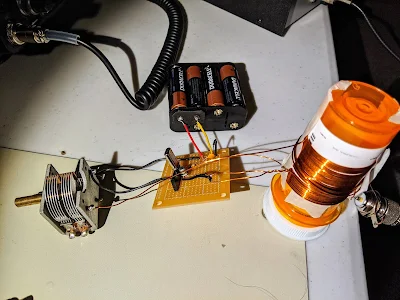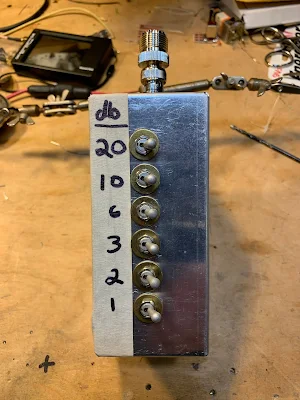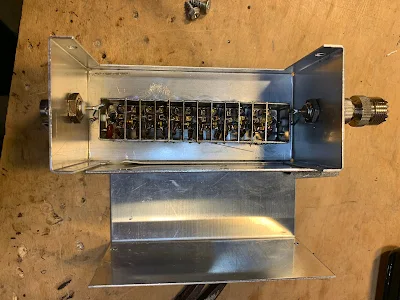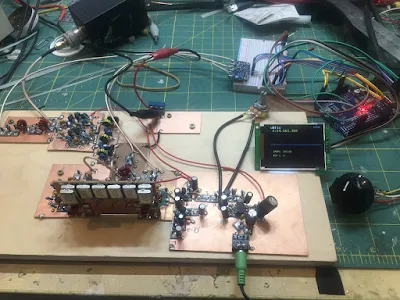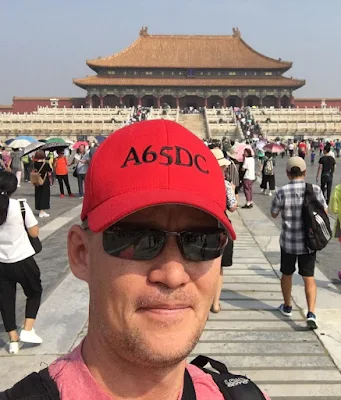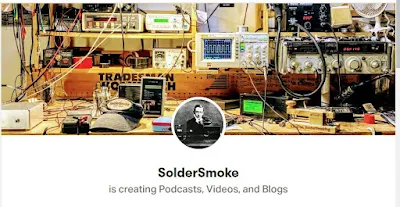SolderSmoke Podcast #224 is available:
1 August 2020
--The launch of Perseverance Mars probe with Ingenuity helicopter.
--China’s Tian
Wen 1 on its way – radio amateur Daniel Estevez EA4GPZ is listening to it!
--Sci Fi Books: Mars Trilogy by Kim Stanley
Robinson. No skip on Mars :-(
--We have some sunspots!
SFI now 72 and the Sunspot number is 23.
Bill's bench:
--Conquering Ceramic Spurs in Q-31 Roofing
filter -- sort of
--NE602 for a Q-75 converter – Gilbert Cell.
--Measuring low power levels out of NE602. Antuino
better than 'scope .
--NanoVNA Really cool stuff. SDR in
there.
--Building a 455 kc LC filter from QF-1 rubble. Using LTSPICE,
Elsie...
--Reviving my bicycle AM radio – The “All Japanese 6”
--Understanding L Network impedance matching.
--Bill’s new resistor kit from Mouser. Thanks to Drew N7DA.
SHAMELESS COMMERCE:
PATREON, AMAZON SEARCH. THANKS
Pete's Bench:
--Lockdown Special
--BPF work on SDR Rig
--I U W I H
Mailbag:
VK3HN Summit
Prowler 7
VK2EMU “The Stranger”
SM0P HB uBITX in Dubai
AE7KI Worked him in VK from London
ON6UU EA3GCY’s 4020 rig
KA4KXX A Simpler
Mighty Mite
W9KKQ M19 DMR
KD4PBJ Radio
Schenectady
W3BBO 12AU7 Regen
KE5HPY Another 12AU7
regen
N5VZH Ne602
Converter
KY3R Wall Art
G4WIF Spectrum Analyzer in your pocket
W2AEW Talks to UK Club
KK0S Sent 455 Kc
IF cans
KL0S Making 9Mhz
filters
VU2ESE Diving into simple SDR schemes
Dean KK4DAS Amateur Radio Astronomy






